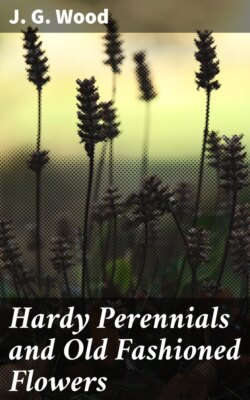Читать книгу Hardy Perennials and Old Fashioned Flowers - J. G. Wood - Страница 21
На сайте Литреса книга снята с продажи.
Anemone Fulgens.
ОглавлениеTable of Contents
Shining Windflower; Nat. Ord. Ranunculaceæ.
Fig. 7. Anemone Fulgens. (Plant, one-eighth natural size.)
This is a variety of A. hortensis or A. pavonina, all of which much resemble each other. This very showy flower is much and deservedly admired. In sheltered quarters or during mild seasons it will flower at Christmas and continue to bloom for several months. It will be seen by the illustration (Fig. 7) to be a plant of neat habit, and for effect and usefulness it is one of the very best flowers that can be introduced into the garden, especially the spring garden, as there is scarcely another of its colour, and certainly not one so floriferous and durable. Though it has been in English gardens over fifty years, it seems as if only recently its real worth has been discovered. It is now fast becoming a universal favourite. The flowers are 2in. across, and of a most brilliant scarlet colour, produced singly on tall naked stems, nearly a foot high. They vary in number of sepals, some being semi-double. The foliage is bright and compact, more freely produced than that of most Windflowers; it is also richly cut.
It may be grown in pots for conservatory or indoor decoration. It needs no forcing for such purposes; a cold frame will prove sufficient to bring out the flowers in winter. Borders or the moist parts of rockwork are suitable for it; but perhaps it is seen to greatest advantage in irregular masses in the half shade of trees in front of a shrubbery, and, after all, it is impossible to plant this flower wrong, as regards effect. To grow it well, however, it must have a moist situation, and good loam to grow in. It is easily propagated by division of strong healthy roots in autumn.
Flowering period, January to June, according to position and time of planting.
